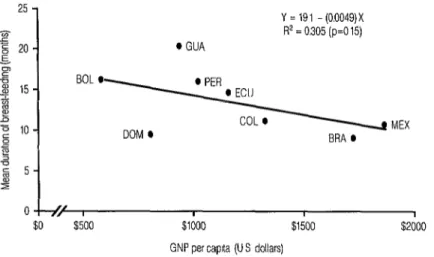Breast-feeding patterns in nine Latin American and Caribbean Countries
Texto
Imagem
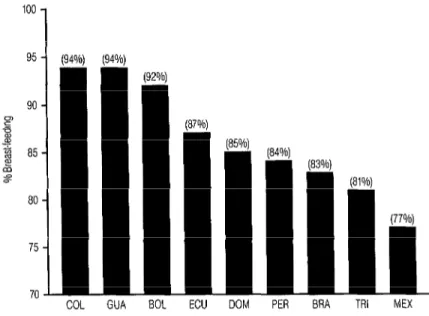
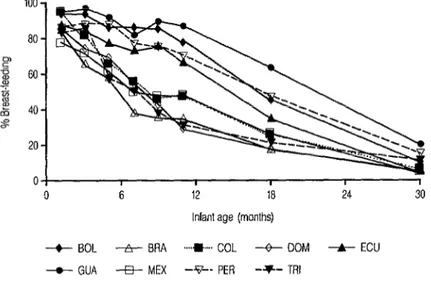
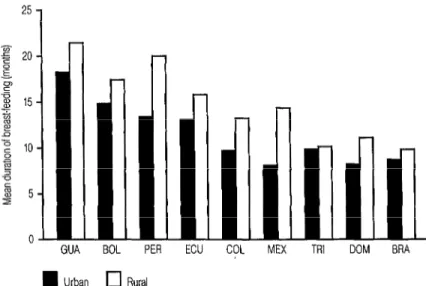
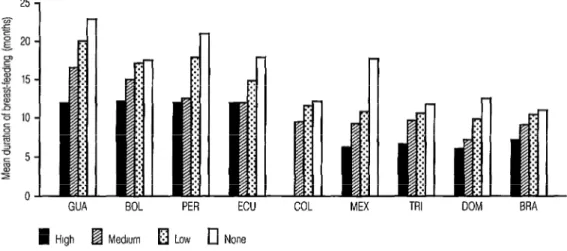
Documentos relacionados
At birth and in oral feeding release, weight was higher in the group of children with good skill and resistance to oral breast-feeding (level IV); however, in the achievement
In five of the six countries examined, breast- feeding duration declined from the mid-1980s to the mid-1990s among women without for- mal education (BF delta range: -3.3 months
2-3 The objectives of the current study were to explore the relationship between breast feeding and diarrhea and to assess the effect of exclusive breast feeding
The negative correlations detected in the present study between the duration of artificial feeding and masticatory performance, and between the duration of sucking habits and
A Tabela 3 fornece algumas indicações. O índice de filhos remanescentes entre mulheres casadas e solteiras foi o mesmo: 1,7, em média, por domicílio. O que se pode inferir desses
Os controlos à importação de géneros alimentícios de origem não animal abrangem vários aspetos da legislação em matéria de géneros alimentícios, nomeadamente
According to data submitted by the countries of Latin America and the Caribbean to the Pan American Zoonoses Center in Buenos Aires, Ar- gentina, during 1985
The Program concentrates on research into and the development of better means of controlling tropical diseases, and on the personnel training and institu- tional
